
Hillsboro is a city in and the county seat of Highland County, Ohio, United States, approximately 35 miles (56 km) west of Chillicothe and 50 miles (80 km) east of Cincinnati. The population was 6,481 at the 2020 census.

Gettysburg National Cemetery is a United States national cemetery in Gettysburg, Pennsylvania created for Union casualties from the Battle of Gettysburg in the American Civil War. The Battle of Gettysburg, which was fought between July 1 to 3, 1863, resulted in the largest number of casualties of any Civil War battle but also was considered the war's turning point, leading ultimately to the Union victory.
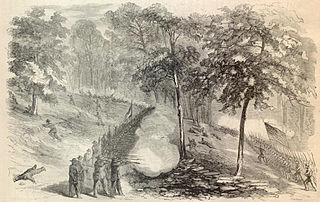
The Battle of South Mountain—known in several early Southern accounts as the Battle of Boonsboro Gap—was fought on September 14, 1862, as part of the Maryland campaign of the American Civil War. Three pitched battles were fought for possession of three South Mountain passes: Crampton's, Turner's, and Fox's Gaps. Maj. Gen. George B. McClellan, commanding the Union Army of the Potomac, needed to pass through these gaps in his pursuit of Confederate General Robert E. Lee's precariously divided Army of Northern Virginia. Although the delay bought at South Mountain would allow him to reunite his army and forestall defeat in detail, Lee considered termination of the Maryland Campaign at nightfall.
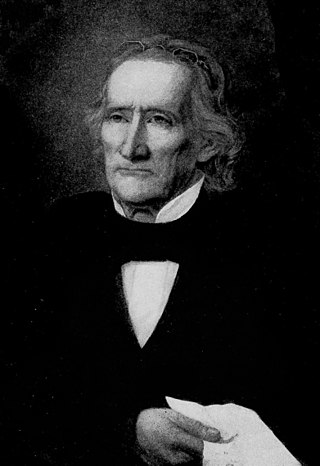
Allen Trimble was a Federalist and National Republican politician from Ohio. He served as the eighth and tenth governor of Ohio, first concurrently as Senate Speaker, later elected twice in his own right.

William Allen Trimble was a Democratic-Republican politician from Ohio. He served in the United States Senate.
Alexander Fulton was the founder of the Iowa State Agricultural Society.

The Morin surface is the half-way model of the sphere eversion discovered by Bernard Morin. It features fourfold rotational symmetry.

Green Lawn Cemetery is an active historic private rural cemetery located in Columbus, Ohio, in the United States. Organized in 1848 and opened in 1849, the cemetery was the city's premier burying ground in the 1800s and beyond. An American Civil War memorial was erected there in 1891, and chapel constructed in 1902. With 360 acres (150 ha), it is Ohio's second-largest cemetery.
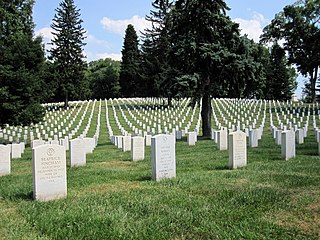
Culpeper National Cemetery is a United States National Cemetery located in the town of Culpeper, in Culpeper County, Virginia. Administered by the United States Department of Veterans Affairs, it encompasses 29.6 acres (120,000 m2) of land, and as 2021, had over 14,000 interments.

Cypress Hills National Cemetery is a 18.2-acre (7.4 ha) cemetery located in the Cypress Hills neighborhood of Brooklyn, New York City. It is the only United States National Cemetery in New York City and has more than 21,100 interments of veterans and civilians.
David Hill was an American pioneer and settler of what became Hillsboro, Oregon, United States. He served in the Provisional Government of Oregon in both the executive and legislative branches, and later as a legislator in the first Oregon Territorial Legislature. Hill made a transaction with the county court in 1850 that led to the renaming of Columbus to Hillsborough in honor of Hill.
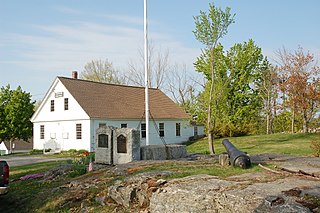
The Lyndeborough Center Historic District, located in the town of Lyndeborough, New Hampshire, United States, consists of three structures: the Town Pound, Town Hall, and Congregational Church. The district was placed on the National Register of Historic Places in 1984. In 2010, by town meeting vote, this district became part of a larger, officially zoned local historic district.

Rodolph Crandall was an American politician and soldier. A native of New York, he served in the American Civil War before settling in the state of Oregon. There he held several offices in Washington County, as well as serving twice as mayor of Hillsboro.

The two Camberwell cemeteries are close to one another in Honor Oak, south London, England. Both have noteworthy burials and architecture, and they are an important source of socioeconomic data in recording the historical growth and changing demography in the community for the Southwark area since 1855.

Wises Landing is a hamlet located in Trimble County, Kentucky, United States. It is at the mouth of Barebone Creek, two miles from Corn Creek creek, at the headwaters of which is Corn Creek Church. In the 19th century it was a thriving port town for traffic inland into Trimble via the creeks. The community was served by the Corn Creek post office and was damaged in the 1937 Ohio River flood. In 1974, the Louisville Gas & Electric Company selected the area for the construction of a new power plant, which was completed in 1990. The Yeager General Store, which was listed on the National Register of Historic Places in 1983, is located in Wise's Landing.

The 27th New Jersey Infantry Regiment was an American Civil War infantry regiment from New Jersey that served a nine-month enlistment in the Union Army. It was the only nine-month Regiment from New Jersey with an eleventh Company.

Drayton and Toowoomba Cemetery is a heritage-listed cemetery at the corner of South Street and Anzac Avenue, Harristown, Queensland, Australia. It was surveyed in May 1850, and is one of the earliest surviving cemeteries in Queensland. The cemetery is large, containing over 45,000 burials. It has been run by the City of Toowoomba, and its successor the Toowoomba Regional Council, since 1974; previously it was run by government-appointed trustees. Many prominent people associated with the Darling Downs are buried in the cemetery, and all sections of the cemetery remain in use. Notable Toowoomba stonemasons R. C. Ziegler & Son, Henry Bailey, Walter Bruce, John H. Wagner and the Bruce Brothers are all associated with monuments within the cemetery.
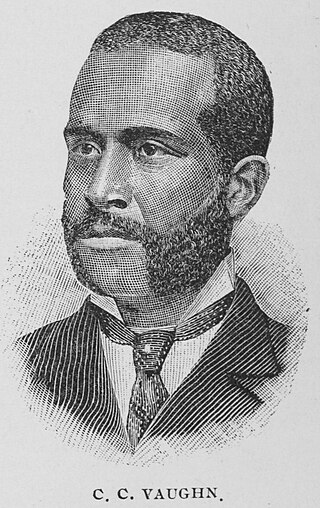
C. C. Vaughn was an educator and Baptist minister in Ohio and Kentucky. He served in the American Civil War and was promoted to orderly sergeant in his heavy artillery regiment. He was also active in the Colored Conventions Movement and played prominent state and national roles in the Grand Army of the Republic, a veterans group, and the Independent Order of Good Samaritans and Daughters of Samaria, an African-American beneficial and temperance society.

Woodland Cemetery is a historic rural cemetery located at 6901 Woodland Avenue in Cleveland, Ohio. Established in 1853, it became Cleveland's main public cemetery after its founding and remained so for the next half-century. It fell into extreme disrepair, and most of its outstanding architectural features dismantled or demolished. In 1986, Woodland Cemetery was added to the National Register of Historic Places. The cemetery has since undergone restoration.







































































